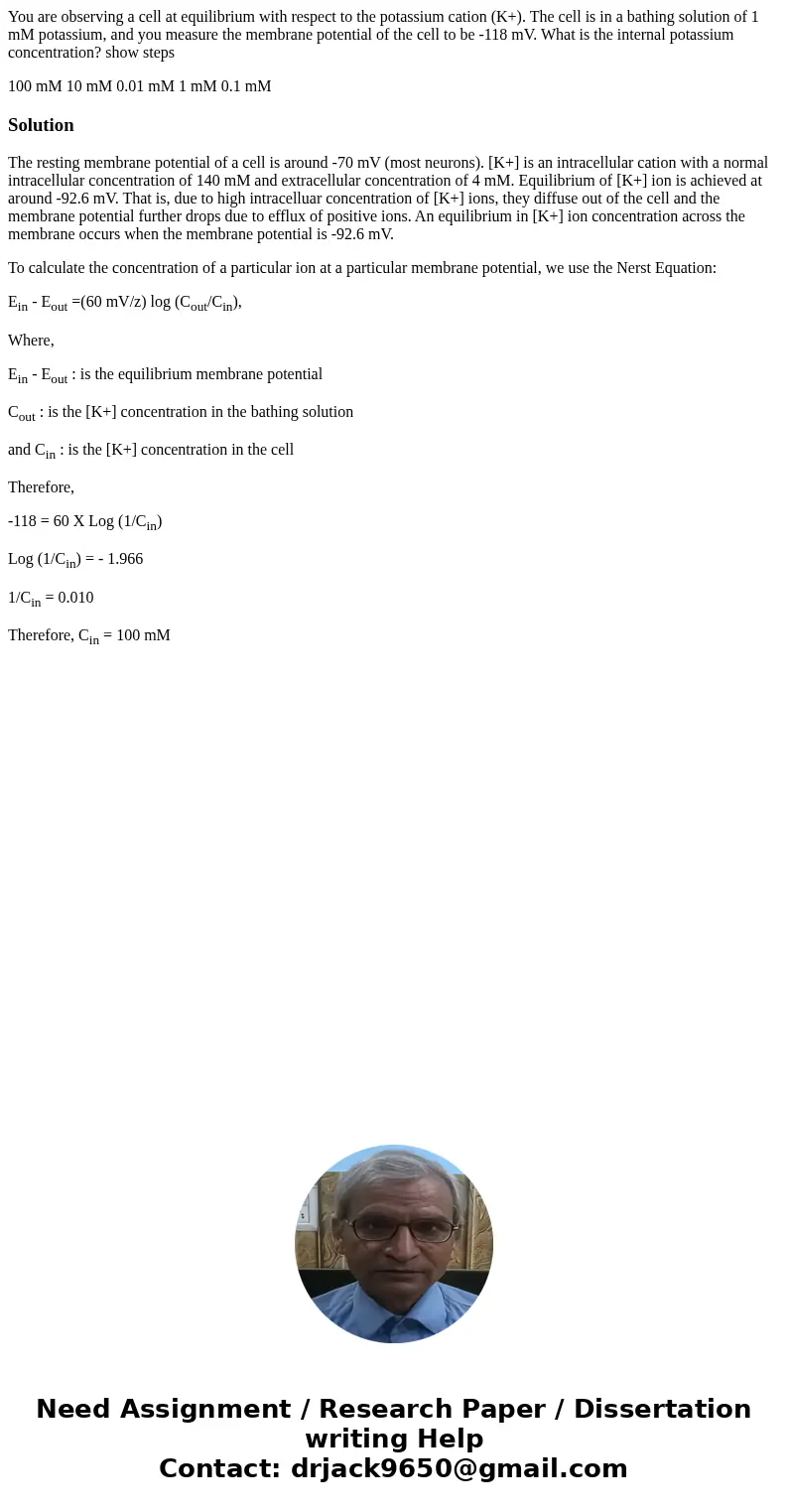You are observing a cell at equilibrium with respect to the
You are observing a cell at equilibrium with respect to the potassium cation (K+). The cell is in a bathing solution of 1 mM potassium, and you measure the membrane potential of the cell to be -118 mV. What is the internal potassium concentration? show steps
100 mM 10 mM 0.01 mM 1 mM 0.1 mM
Solution
The resting membrane potential of a cell is around -70 mV (most neurons). [K+] is an intracellular cation with a normal intracellular concentration of 140 mM and extracellular concentration of 4 mM. Equilibrium of [K+] ion is achieved at around -92.6 mV. That is, due to high intracelluar concentration of [K+] ions, they diffuse out of the cell and the membrane potential further drops due to efflux of positive ions. An equilibrium in [K+] ion concentration across the membrane occurs when the membrane potential is -92.6 mV.
To calculate the concentration of a particular ion at a particular membrane potential, we use the Nerst Equation:
Ein - Eout =(60 mV/z) log (Cout/Cin),
Where,
Ein - Eout : is the equilibrium membrane potential
Cout : is the [K+] concentration in the bathing solution
and Cin : is the [K+] concentration in the cell
Therefore,
-118 = 60 X Log (1/Cin)
Log (1/Cin) = - 1.966
1/Cin = 0.010
Therefore, Cin = 100 mM

 Homework Sourse
Homework Sourse